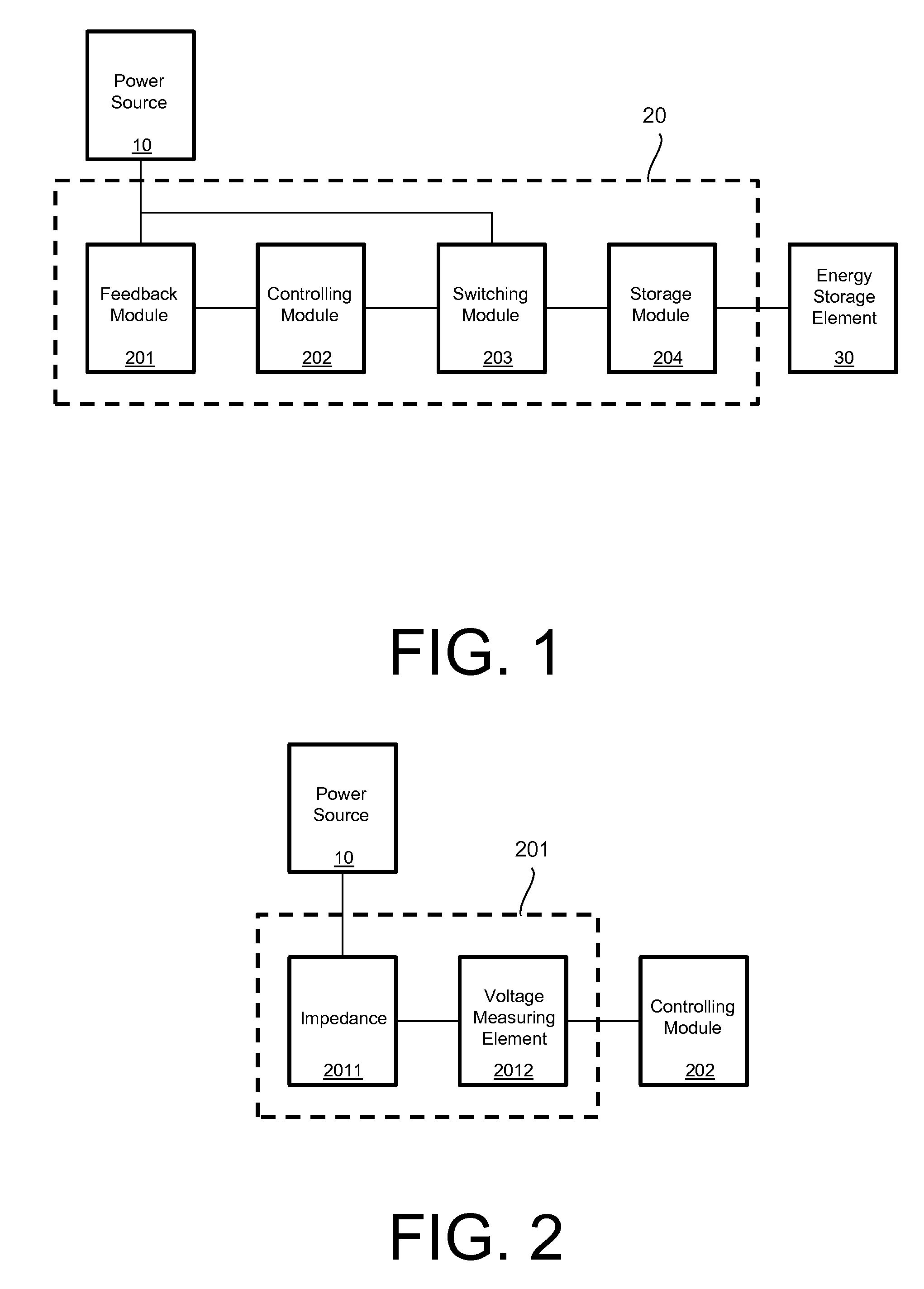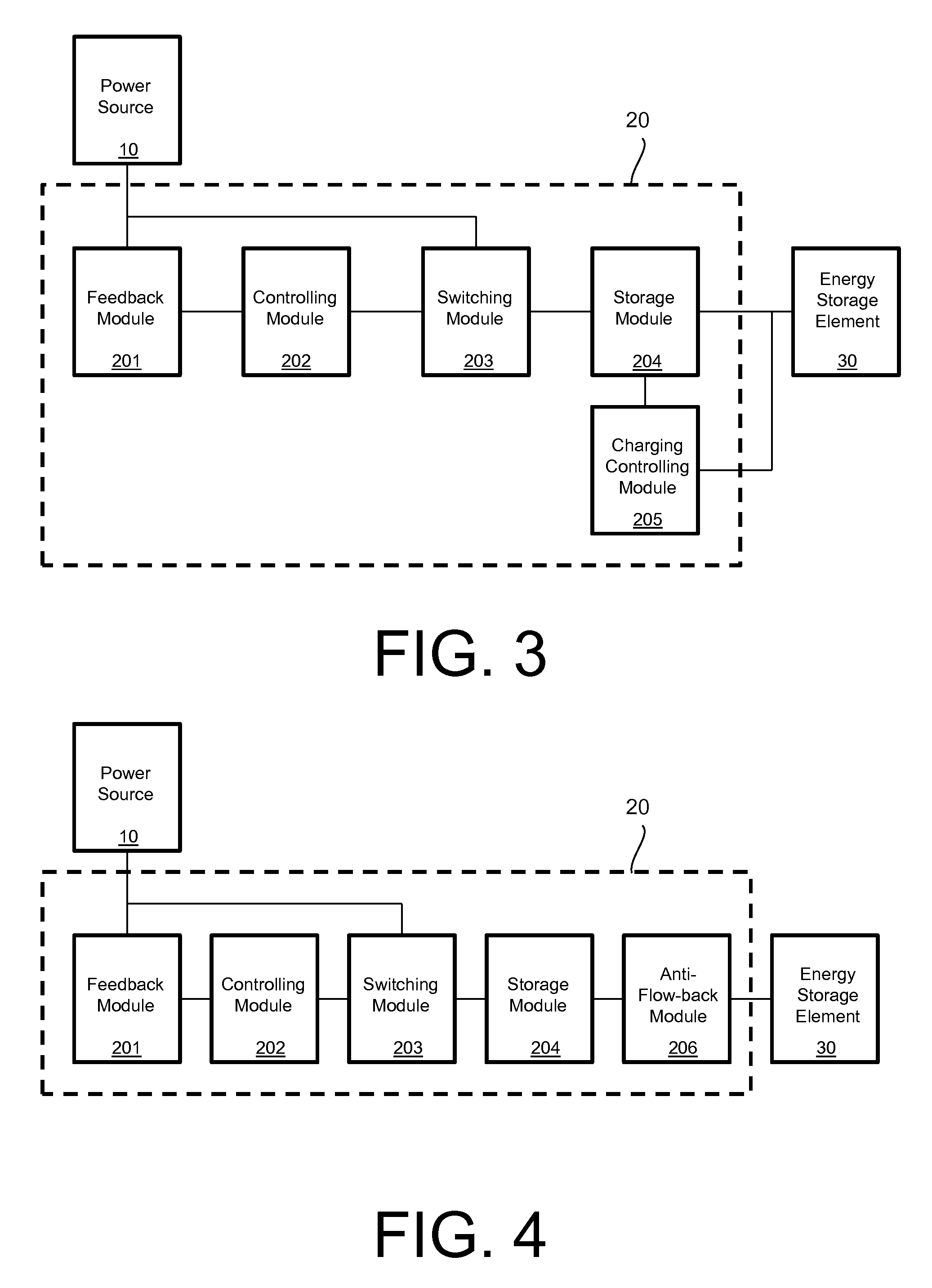Charging circuit with current regulation
a charging circuit and current regulation technology, applied in the direction of electric vehicles, electric power, transportation and packaging, etc., can solve the problem that every power source we can use to charge a device has limited current capabilities in some way, and achieve the effect of reducing and increasing the on-off ratio of the switching modul
- Summary
- Abstract
- Description
- Claims
- Application Information
AI Technical Summary
Benefits of technology
Problems solved by technology
Method used
Image
Examples
Embodiment Construction
[0030]Descriptions of embodiments of the present invention are provided in detail hereinbelow, in conjunction with the accompanying drawings.
[0031]FIG. 1 illustrates a charging circuit 20 according to an embodiment of the present invention. The charging circuit 20 is coupled to a power source 10 and used for charging an energy storage element 30.
[0032]The power source 10 comprises, but is not limited to, a wall outlet or a USB port.
[0033]The energy storage element 30 comprises, but is not limited to, a supercapacitor or a fast-chargeable Li-Ion battery.
[0034]It is to be noted that any energy storage element which is suitable for very quick recharging could be used in the present invention.
[0035]Referring to FIG. 1, the dashed pane indicates the charging circuit 20 which comprises a feedback module 201, a controlling module 202, a switching module 203 and a storage module 204.
[0036]The feedback module 201 is configured to generate a feedback signal on the basis of the input current d...
PUM
 Login to View More
Login to View More Abstract
Description
Claims
Application Information
 Login to View More
Login to View More - R&D
- Intellectual Property
- Life Sciences
- Materials
- Tech Scout
- Unparalleled Data Quality
- Higher Quality Content
- 60% Fewer Hallucinations
Browse by: Latest US Patents, China's latest patents, Technical Efficacy Thesaurus, Application Domain, Technology Topic, Popular Technical Reports.
© 2025 PatSnap. All rights reserved.Legal|Privacy policy|Modern Slavery Act Transparency Statement|Sitemap|About US| Contact US: help@patsnap.com



